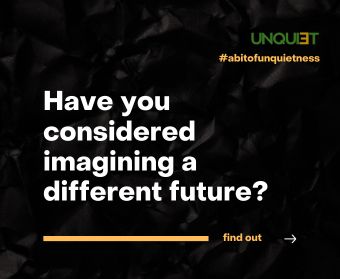Imagining a positive future can increase expectancies for a positive future – that’s what research from positive psychologists confirms. But often, what is limiting us are the narratives and the stories we tell ourselves.
Stories – we tell to make sense of the world around us and our narratives – those we tell ourselves about our lives and identity. These omnipresent stories often go unnoticed, yet they influence our lives and paths. So perhaps a new story could unlock new possibilities where the kind of future we want comes alive. But how do we look for new stories?
Making Transitions
Often, the stories and personal narratives we hold about ourselves become so ingrained in who we are that they even start to become part of our core beliefs. These beliefs form the fabric of our identity, motivating us to keep them intact. However, if we were to make any transition towards rethinking these stories or core beliefs, we would all encounter a challenge. Neuroscientists have found that when our core beliefs are confronted, the amygdala in our brain can trigger a “fight-or-flight response” – a near-instantaneous sequence of hormonal changes and physiological responses that helps someone fight the threat off or flee to safety. (To understand the science behind this brain and body response, read the additional resources).
In his book Think Again, Adam Grant wrote to help our brain navigate this uncertainty concerning core beliefs or personal narratives.
Every time we encounter new information, we have a choice. We can attach our opinions to our identities and stand our ground in the stubbornness of preaching and prosecuting. Or we can operate more like scientists, defining ourselves as people committed to the pursuit of truth – even if it means proving our own views wrong.
So, if we begin to operate as scientists, we may need to embrace curiosity, imagination and hypothesis testing. To start this transition, one could begin with this question – are the stories or personal narratives holding you back from a journey toward embracing your potential or even a different future?
(Re)Imagining
Rallying our imagination is one way we can reimagine how our world works. Imagination is the capacity to perceive things through the lens of possibility, drawing from our diverse palette of options and memories. It reshapes, remixes, and melds our past experiences and ideas into new and original combinations. However, as author Rob Hopkins notes in his book From What is to What If, our world and the systems we are part of make imagination less likely. Rob quotes Barry Kaufman, Scientific Director of Philadelphia’s Imagination Institute, in his book, who suggests
We believe that imagination is an essential skill in the world. It is essential… to empathy, to perspective taking. It is essential to our own personal sense of well-being, allowing us to realise our personal futures and much more.
Looking at the field of positive psychology suggests imagining specific outcomes can increase the likelihood of it coming to pass. A scientific research paper by Peters et al. (2010) states that imagining a positive future can indeed increase expectancies for a positive future. In addition, the expectancy-value model of motivation formulated by Carver and Scheier (2001) noted that progress towards a goal determines the effect and confidence of a good outcome. They also point out that mentally simulating an optimistic scenario is suggested to yield a similar effect as actual behaviour, potentially resulting in heightened confidence levels for achieving success.
Your future with “what if?”
Your future self doesn’t exist right now, and no one can stop you from imagining another kind of future. However, without limits, imagination could result in nothing or becoming overwhelmed with the possibilities. If you choose to pursue this path, a good approach would be to narrow your target area. I found this advice by Adam Grant in Think Again worthy of sharing:
It’s worth pausing once or twice a year to reflect on how our aspirations have changed. As we identify past images of our lives that are no longer relevant to our future, we can start to rethink our plans.
Here are a few valuable recommendations:
· Schedule a life check-up and an opportunity to reflect on experiences.
· Rethink your actions, not just your surroundings, and develop an action plan.
· Make time to think again by scheduling the life check-up at least every six months.
In conclusion, the unique ability of humans to craft and share stories distinguishes us from other species. Consider the transformative power of shifting your personal narratives to ones of positivity, envisioning a brighter future. What if you changed your personal stories or narratives to positive ones to reimagine your future?
Resources to further explore:
- Understanding the stress response: https://www.health.harvard.edu/staying-healthy/understanding-the-stress-response
- “From What is to What if” by Rob Hopkins
- “Think Again” by Adam Grant
- Madelon L. Peters, Ida K. Flink, Katja Boersma & Steven J. Linton (2010) Manipulating optimism: Can imagining a best possible self be used to increase positive future expectancies? The Journal of Positive Psychology, 5:3, 204-211, DOI: 10.1080/17439761003790963
- Carver, C.S., & Scheier, M.F. (2001). Optimism, pessimism and self-regulation. In E.C. Chang (Ed.), Optimism and pessimism: Implications for theory, research, and practice (pp. 31–52). Washington, DC: APA.
If you enjoyed this article, please share it with your friends and family.
If you want to receive A Bit of Unquietness blog directly to your mailbox, please subscribe by joining our mailing list.

